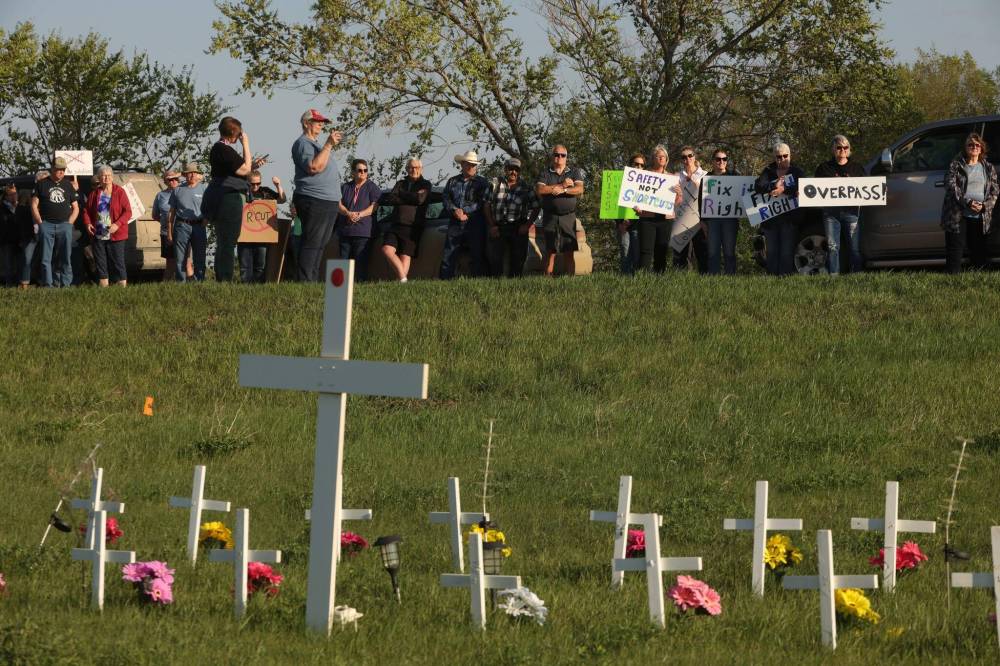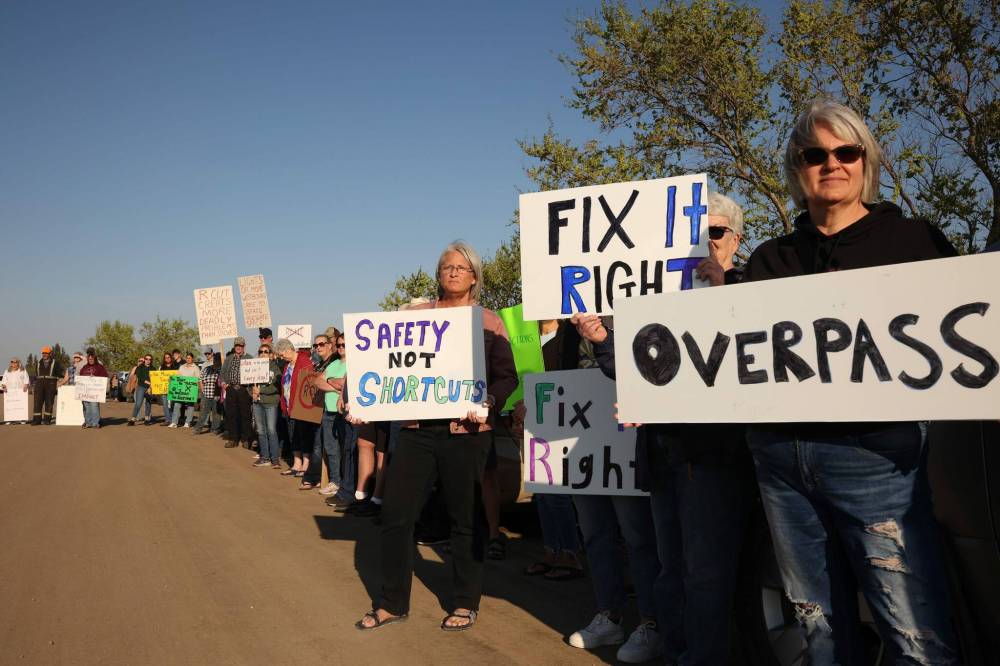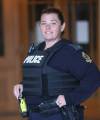Demonstrators demand overpass at dangerous Carberry intersection
Advertisement
Read this article for free:
or
Already have an account? Log in here »
To continue reading, please subscribe:
Monthly Digital Subscription
$0 for the first 4 weeks*
- Enjoy unlimited reading on winnipegfreepress.com
- Read the E-Edition, our digital replica newspaper
- Access News Break, our award-winning app
- Play interactive puzzles
*No charge for 4 weeks then price increases to the regular rate of $19.00 plus GST every four weeks. Offer available to new and qualified returning subscribers only. Cancel any time.
Monthly Digital Subscription
$4.75/week*
- Enjoy unlimited reading on winnipegfreepress.com
- Read the E-Edition, our digital replica newspaper
- Access News Break, our award-winning app
- Play interactive puzzles
*Billed as $19 plus GST every four weeks. Cancel any time.
To continue reading, please subscribe:
Add Free Press access to your Brandon Sun subscription for only an additional
$1 for the first 4 weeks*
*Your next subscription payment will increase by $1.00 and you will be charged $16.99 plus GST for four weeks. After four weeks, your payment will increase to $23.99 plus GST every four weeks.
Read unlimited articles for free today:
or
Already have an account? Log in here »
Hey there, time traveller!
This article was published 23/05/2025 (189 days ago), so information in it may no longer be current.
CARBERRY — More than 150 people stood near the Trans-Canada Highway and Highway 5 to denounce the preferred option for a redesign of the intersection in response to a collision two years ago that killed 17 people.
They carried signs that read “safety not shortcuts,” and “how many more accidents before they listen.” The group opposes a U-turn option, which is called an RCUT.
Jordan Dickson, 31, one of the organizers, said the RCUT model isn’t safe for the farmers and truckers who live in the area.

More than 150 people gathered to protest proposed changes for the Trans-Canada Highway and Highway 5, where 17 people died in a crash in June 2023.
“There’s hundreds, if not thousands of trucks … plus all the other everyday passenger traffic coming through here,” she said.
The RCUT model, or restricted crossing U-turn, doesn’t exist in Manitoba but is commonly found in the United States. The Carberry RCUT would include U-turns both east and west of the current intersection.
At an open house in late March, a consultant hired by the provincial government said three design options were under consideration, but his presentation focused on the RCUT design because, he said, it is unfamiliar to Manitobans.
Dickson, who lives 30 seconds away from the intersection, said the McCain potato plant southeast of Carberry is the source of a lot of traffic throughout the year, and big vehicles would have a hard time matching the speed on the Trans-Canada before slowing down for a U-turn.
“For all those vehicles to have to merge onto the (Trans-Canada), merge over three lanes, do a U-turn, merge back over — it’s a recipe for a disaster,” said Dickson, standing near crosses that have been erected to honour the 17 victims of the June 2023 crash.
They died after their minibus crossed into the eastbound lanes of Highway 1 and was hit by a semi-trailer.
Attendees at the rally said they want an overpass — a much more expensive option — to be built.
The province has said it isn’t feasible, but Dickson said cost shouldn’t matter.
“How many more lives have to be lost before the province finally realizes that the cost is worth it?” she said.
Kirsten Duguay said her daughter is supposed to start working at the hospital in Neepawa soon and will have to cross the intersection to get to work. She said she’s worried about her safety if an RCUT is implemented.
“It makes me nervous that she has to navigate that intersection, possibly after a 12-hour shift where she’s tired,” said the 55-year-old Duguay, who is a nurse in Carberry.
A truck driver who said he uses the intersection at least three times a day said he’s worried about the RCUT intersection.
“I can tell you right now, your accident rate is going to skyrocket,” said 50-year-old Byron Vanrooyen. “A truck can’t pick up speed fast enough, and the guys with the cars come down here driving at 110, 120 (km/h) — you can’t push a truck in there faster.”
Vanrooyen said some tractors can’t go faster than 30 km/h when pulling equipment, and they’ll be in the way of other traffic.

TIM SMITH / THE BRANDON SUN
Protesters carried signs that read “safety not shortcuts,” and “how many more accidents before they listen.” The group opposes a U-turn option, called an RCUT.
“You’re going to create more problems, with people having more accidents and more deaths,” he said.
Rally-goers, equipped with a megaphone, said the province surveyed traffic volumes in July, which is among the least busy times of the year. They said the survey should have been conducted in the busy spring or fall seasons.
“The consultants aren’t listening. They roll their eyes, they brush us off,” Dickson told the crowd via the megaphone.
Carberry Mayor Ray Muirhead, who wasn’t at the rally, said he’s “still on the fence” about which route the province should select.
He said because the province said it won’t build an overpass, he prefers the RCUT, as the design is safer than other interchanges. But he also acknowledged that farming equipment, which travels a lot slower than the 100 km/h speed limit, could pose a danger on the busy Trans-Canada.
Muirhead said the province should put the overpass option back on the table, and said the NDP government saying it’s too expensive is a way of “passing the buck off to another government.”
He said the rally will draw attention to the issue but he doesn’t think it will affect the government’s decision.
Transportation and Infrastructure Minister Lisa Naylor, in a statement Thursday, didn’t provide an update on which design is favoured.
“The province has conducted extensive community consultations, and no final decision has been made,” said a spokesperson from Naylor’s office. “Work continues on the functional design process and the project remains on schedule.”
Construction is set to begin in early 2026, and should be open to traffic in the fall of 2026.
— Brandon Sun





